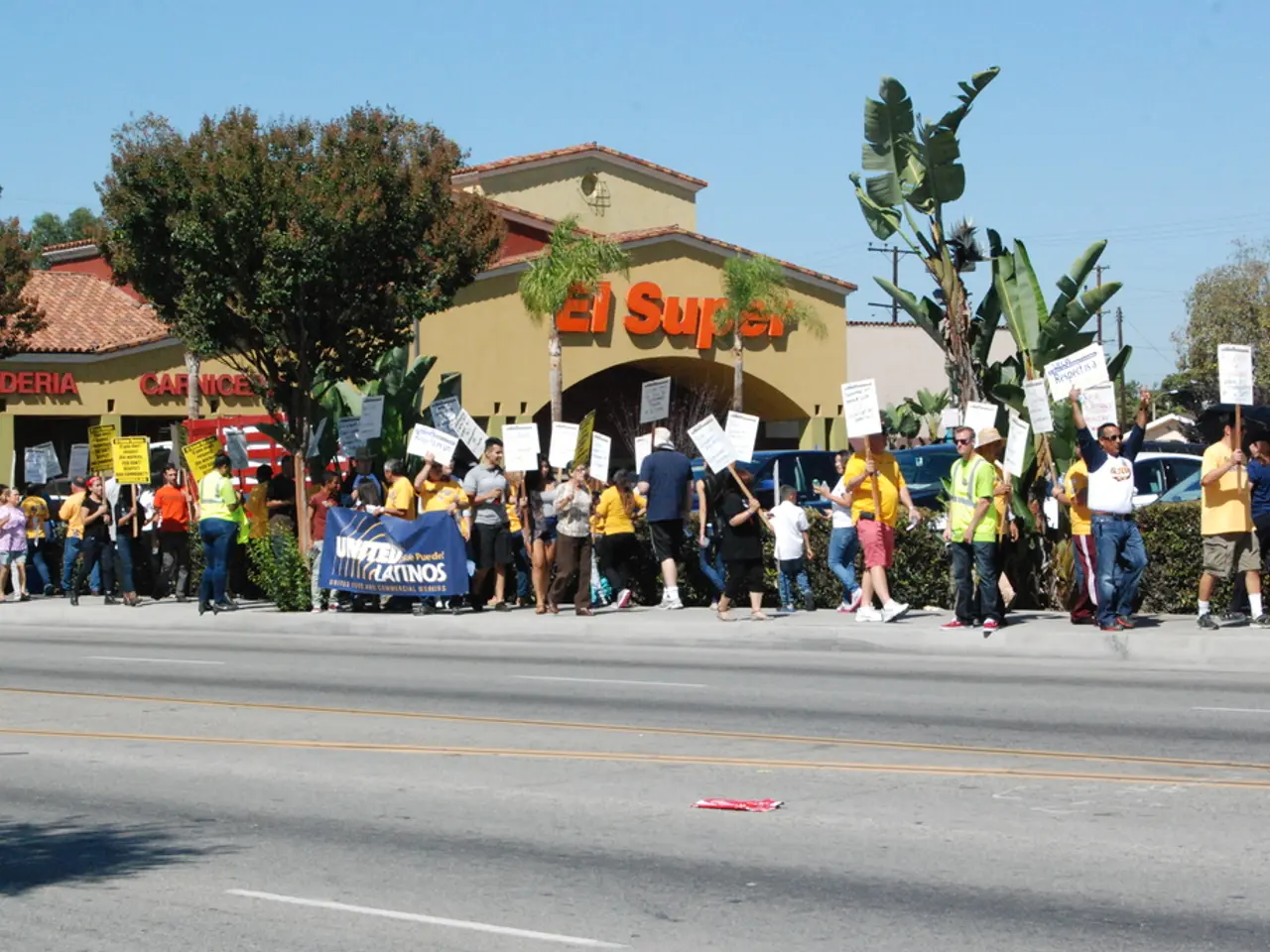Office building in Midtown Manhattan undergoes deadly siege
In a shocking turn of events, a deadly attack on a Midtown Manhattan skyscraper has left four people, including a police officer, dead. The suspected gunman, Shane Devon Tamura, reportedly targeted the NFL headquarters located in the building, raising questions about his motive.
According to investigators, Tamura, a former high school football player, left a note claiming he suffered from chronic traumatic encephalopathy (CTE), a brain disease associated with repeated head trauma often seen in football players. The note suggested he may have blamed the NFL for his condition [1][2][4].
Tamura, who held a concealed carry permit for a handgun from Las Vegas, carried out the attack with an AR-15-style rifle. His vehicle was found during the investigation, containing a rifle case with rounds, a loaded revolver, ammunition, magazines, a backpack, and medication [3].
The victims of the attack include Aland Etienne, an unarmed security guard, Julia Hyman, a 27-year-old Cornell graduate and employee of the Rudin Management Company, and a 36-year-old police officer named Didarul Islam. Officer Islam, an immigrant from Bangladesh who had worked in the police force for three and a half years, is survived by two children and a pregnant wife [5][6].
Officer Islam was working security in the building while off-duty at the time of the attack. His bravery and essential contributions to New York City were praised by Manny Pastreich, President of SEIU 32BJ [7].
Investigators are still questioning a man who supplied gun parts for the AR-15-style rifle used in the attack. Financial firm Blackstone announced the death of Wesley LePatner, who served as Global Head of Core+ Real Estate and the Chief Executive Officer of Blackstone Real Estate Income Trust (BREIT) [8].
It's important to note that Tamura's claim of CTE remains unconfirmed, as diagnosis can only be made post-mortem. Despite his note expressing frustration with the NFL, investigators are looking into whether Tamura specifically targeted the NFL headquarters [1][4].
Tamura's actions have sent shockwaves through the city, underscoring the need for continued vigilance and a deeper understanding of the mental health challenges faced by those who have suffered sports-related injuries.
- The suspected gunman, Shane Devon Tamura, who held a concealed carry permit for a handgun from Las Vegas, seemingly had a grievance against the NFL, as indicated by a note he left, suggesting a possible connection between his mental-health issues and his alleged blaming of the NFL for his condition.
- The tragic incident in Midtown Manhattan, which resulted in the deaths of four individuals, including a police officer, demonstrated the need for greater awareness and focus on health-and-wellness and mental-health issues, particularly those related to sports and the potential long-term effects, such as chronic traumatic encephalopathy (CTE).
- In the realm of general-news, the deadly attack on a NYC skyscraper housing the NFL headquarters has raised concerns about motive and the mental state of the perpetrator, Shane Devon Tamura, who was a former high school football player.
- As the city copes with the aftermath of the shocking attack, the world of sports, particularly American football, may find itself under increased scrutiny and reflection, as the incident serves as a grim reminder of the potential consequences of repeated head trauma in sports and the associated mental-health challenges.




